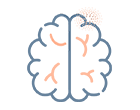Kokubun, N. (2020). Charcot–Marie–Tooth disease and neuroinflammation. Clinical And Experimental Neuroimmunology, 11(2), 109-116. doi: 10.1111/cen3.12566
Ramchandren S. (2017). Charcot-Marie-Tooth Disease and Other Genetic Polyneuropathies. Continuum (Minneapolis, Minn.), 23(5, Peripheral Nerve and Motor Neuron Disorders), 1360–1377. https://doi.org/10.1212/CON.0000000000000529
Klein, C., Duan, X., & Shy, M. (2013). Inherited neuropathies: Clinical overview and update. Muscle & Nerve, 48(4), 604-622. doi: 10.1002/mus.23775
Reilly, M. M., Murphy, S. M., & Laurá, M. (2011). Charcot-Marie-Tooth disease. Journal of the peripheral nervous system : JPNS, 16(1), 1–14. https://doi.org/10.1111/j.1529-8027.2011.00324.x
Morena, J., Gupta, A., & Hoyle, J. C. (2019). Charcot-Marie-Tooth: From Molecules to Therapy. International journal of molecular sciences, 20(14), 3419. https://doi.org/10.3390/ijms20143419
Høyer, H., Braathen, G. J., Busk, Ø. L., Holla, Ø. L., Svendsen, M., Hilmarsen, H. T., Strand, L., Skjelbred, C. F., & Russell, M. B. (2014). Genetic diagnosis of Charcot-Marie-Tooth disease in a population by next-generation sequencing. BioMed research international, 2014, 210401. https://doi.org/10.1155/2014/210401





